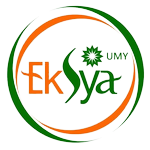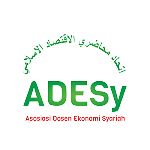Curbing Unemployment and Brain Drain Among Nigerian Youths Through Islamic Financing Instruments
DOI:
https://doi.org/10.18196/jiebr.v1i1.11654Keywords:
Unemployment, Brain Drain, Graduates/Youths, Islamic Financing, Nigeria.Abstract
The alarming increase in graduates/youths unemployment across the globe is disturbing. Graduates/youths unemployment that leads to brain drain is a complex problem facing developing countries, of which Nigeria is not spared. It is on this premise that necessitated the purpose of writing this paper is to ameliorate the issue of graduate/youth unemployment through the adoption of Islamic financing instruments as a solution to curb this high rate of graduates/youths unemployment in Nigeria. Going by the focus of this paper, Islamic financing instruments which have been seen to be under-utilized but if aggressively encouraged by the Nigerian government through easy access to funding by graduates/youths, which is a catalyst to entrepreneurship among graduates/youths to reduce unemployment that has been combating them and the nation at large. The method employed for this study is conceptual in nature. It reviewed previous literature whereby understanding the roles played by Islamic financing in curbing the menace of brain drain and unemployment among graduates/youth were gained. Based on the understanding of reviewed literature, this study has documented that Islamic finance instrument has played a significant role in SMEs. The study also found out that the impact of harnessing SMEs through Islamic finance instruments cannot be ignored in any society. Thus, it is suggested that the Nigerian government should embrace Islamic financing to reduce the population of graduates/youths who have recently, as a matter of no job, partake in ENDSARS protests and roaming the streets aimlessly across Nigeria. The implication of study on the Nigeria government and policymaker in term of adoption of Islamic finance instruments was to address the issues of SMEs in order to tame the menace on unemployment and brain drain, thereby retaining our graduate/youths to contribute their quotas through their skills/potentials for the betterment of the country.
References
AbdulGaniyy, A., & AbdulKareem, I. A. (2020). Islamic Banking and Global Financial Crises: A Review of Liquidity Risk Management. Islam Universalia, 2(1), 153-170.
AbdulKareem, I. A., AbdulGaniyy, A., Mahmud, M. S., & Yazid, A. S. (2020). Alternative Way to Reducing Poverty and Inequality in Nigeria from Islamic Perspective. Journal of Islamic Banking and Finance, 37(2), 73-83.
AbdulKareem, I. A., Mahmud, M. S., & AbdulGaniyy, A. (2020). Thematic Review of Sukuk Ijarah Issued in Nigeria: An Opportunity for Economic Development. Jurnal Iqtisaduna, 1(1), 61-80.
AbdulKareem, I. A., & Mahmud, M. S. (2019). Infrastructure Project Financing Through Sukuk as an Alternative to Conventional Bond Financing. Journal of Management and Operation Research, 1 (19).
Adekola, P. O., ALLEN, A. A., Olawole-Isaac, A., Akanbi, M. A., & Adewumi, O. (2016). Unemployment in Nigeria; A Challenge of Demographic Change?. International Journal of Scientific Research in Multidisciplinary Studies ISROSET, 2(5), 1-9.
Adesina, O. S. (2013). Unemployment and security challenges in Nigeria. International Journal of Humanities and Social Science, 3(7), 146-156.
Achsien, I. H., & Purnamasari, D. L. (2016). Islamic crowd-funding as the next financial innovation in islamic finance: Potential and anticipated regulation in Indonesia. European Journal of Islamic Finance, (5).
Ahrens, J., Kelly, M., & Van Liempt, I. (2016). Free movement? The onward migration of EU citizens born in Somalia, Iran, and Nigeria. Population, Space and Place, 22(1), 84-98.
Ajaegbu, O. O. (2012). Rising youth unemployment and violent crime in Nigeria. American Journal of Social Issues and Humanities, 2(5), 315-321.
Alandejani, M. & Asutay, M. (2017). Nonperforming loans in the GCC banking sectors : does the Islamic finance matter?. Research in international business and finance, 42, 832-854.
Alonso, I. M. (2015). Crowdfunding in Islamic finance and microfinance: A case study of Egypt. Access to Finance and Human Development—Essays on Zakah, Awqaf and Microfinance, 85.
Anetoh, B. C., & Onwudinjo, V. G. (2020). Emigration and the Problem of Braindrain in Nigeria: A Philosophical Evaluation. Journal of African Studies and Sustainable Development, 3(1).
Balogun, K. (2016); Unemployment in Africa Paper Presented at African Transformation Forum organized by African Centre for Economic Transformation (ACET), April, 2016, Kigali, Rwanda.
Barnichon, R., & Yee, W. (2020). Adjusting the Unemployment Thermometer. FRBSF Economic Letter, 2020(27), 01-05
Bazza, M.I., Maiwada, B.Y., &Daneji, B. A. (2014), Islamic Financing: A Panacea to Small and Medium Scale Enterprises Financing Problems in Nigeria. European Scientific Journal,10, (10), 432-444.
Biancone, P. P., & Secinaro, S. (2016). The equity crowdfunding italy: a model sharia compliant. European Journal of Islamic Finance, (5).
Biancone, P. P., & Radwan, M. (2018). Sharia-Compliant financing for public utility infrastructure. Utilities Policy, 52, 88-94.
Dankumo, A.M., Ishak, S., Bani, Y. & Hamza, H. Z. 2019. The Relationship between Public Expenditure, Corruption and Poverty in Nigeria. Jurnal Ekonomi Study dan Penbengunan 10(4). Retrieved from http://journal2.um.ac.id/index.php/JESP/issue/view/521
Dipika (2017). Islamic Banking in India: Opportunities and Challenges. International Journal of Engineering Research & Technology (IJERT), 5(3), 1-4.
Dodani, S., & LaPorte, R. E. (2005). Brain drain from developing countries: how can brain drain be converted into wisdom gain?. Journal of the Royal Society of Medicine, 98(11), 487-491.
Eggert, W., Krieger, T., & Meier, V. (2007). Education, Unemployment and Migration: University of Paderborn.
Emeh, I. E., Nwanguma, E. O., & Abaroh, J. J. (2012). Engaging youth unemployment in Nigeria with youth development and empowerment programmes; the Lagos state in focus. Interdisciplinary Journal of Contemporary Research in Business, 4(5), 1125-1141.
Fitzgerald, S. (2010). ―The return of Irish brain drain‖. The Guardian. Retrieved from http://www.guardian.co.uk/commentisfree/2010/mar/02/ireland-young-migrate-work.
George,T. O, Hezekiah, A. O, Mofoluwake, A & Onyeka , C. (2014). Thinking the brain drain syndrome and Africa’s development in the 21st century: cases from Nigeria and lessons from the Asian tigers. A Peer Reviewed International Journal of Asian Academic Research Associates 1(20), 147-167.
Immigration Test Turn Sour, Online Vanguard Newspaper, Accessed online on 9th April, 2014 at www.bellanaija.com
Kareem, B. (2018). Impact of Entrepreneurship on Unemployment/Underemployment Rate in Nigeria: Islamic Perspective. Science Arena Publications Specialty. Journal of Accounting and Economics, 4(1), 12-18.
Olaide, K. M., & AbdulKareem, I. A. (2021). Islamic Financing as Mechanism for Socio-Economic Development: A Conceptual Approach. The Journal of Management Theory and Practice (JMTP), 2(1), 94-98.
Oppong, S. & Sachs, S. (2015)., Managing Graduate Unemployment in Emerging Economies Critical Analysis of the Skill Mismatch and Over Supply Theses. JEL poslovnaizvrsnost Zagreb, God, ix, vol 1.JEL classification, May, pp125-135.
Salami, C. G. E. (2013). Youth unemployment in Nigeria: A time for creative intervention. International Journal of Business and Marketing Management, 1(2), 18-26.
Study.com (2019). What`s Brain Drain in Economics? Definition, Causes, Effects and Examples.Retrieved on 16/11/2020 from: https://study.com/academy/lesson/what-is-brain-drain-in-economics-definition-causes-effects-examples.html.
Suciu, Åž. M., Popescu, C. A., Ciumageanu, M. D., & Buzoianu, A. D. (2017). Physician migration at its roots: a study on the emigration preferences and plans among medical students in Romania. Human resources for health, 15(1), 6.
Ghafar, A. A. (2016). Educated but unemployed: The challenge facing Egypt’s youth. Brookings Doha Center, 1-16.)
Gibson, J., & McKenzie, D. (2011). Eight questions about brain drain. Journal of Economic Perspectives, 25(3), 107-28.
Panescu, C. A. (2004). Brain drain and brain gain: a new perspective on highly skilled migration. Retrievd from: http://pdc.ceu.hu/archive/00003399/01/brain_drain_brain_gain.pdf
Lawal, I. M., & Ajayi, J. M. (2019). The role of Islamic social finance towards alleviating the humanitarian crisis in North-East Nigeria. Jurnal Perspektif Pembiayaan dan Pembangunan Daerah, 6(5), 545-558.
Laila, S. U., & Fiaz, M. F. (2018). Impact of brain drain on economic growth in Pakistan. The Business & Management Review, 9(4), 548-552.
Levantis, T. (2019). Urban Unemployment in Papua New Guinea-it's criminal. Pacific Economic Bulletin, 12(2), 73-84.
Mapulanga-Hulston, J. K. (2014). The Migration of Professionals from Africa: Assessing the Impact of the “Brain Drain†from the Continent. In Contemporary Africa (225-244). Palgrave Macmillan, New York.
Mbemba, G. I. C., Gagnon, M. P., & Hamelin-Brabant, L. (2016). Factors influencing recruitment and retention of healthcare workers in rural and remote areas in developed and developing countries: an overview. Journal of Public Health in Africa, 7(2).
Musari, K. (2016). Economic Sustainability for Islamic Nanofinance Through WaqfSukuk Linkage Program (Case Study in Indonesia). Uluslararası İslam Ekonomisi ve Finansı Araştırmaları Dergisi, 2(3), 73-94.
National Bureau of Statistics, (2020). Labor Force Statistics: Unemployment and Underemployment Report, Abridged Labour Force Survey Under Covid-19 (Q2 2020). Retrieved from https://www.nigerianstat.gov.ng/elibrary
Njoku, A. C., & Ihugba, O. A. (2011). Unemployment and Nigerian economic growth (1985-2009). Mediterranean Journal of Social Sciences, 2(6), 23-23.
Oubdi, L. & Raghibi, A. 2018). Sukuk-Waqf: The Islamic Solution for Public Finance Deficits. European Journal of Islamic Finance, (9), 1-8.
Oshodi, B. A. (2012). Reducing Poverty: The Prospects of Islamic Finance in Africa. Available at SSRN 2055126.
Oviasuyi, P. O., Arowoshegbe, A. O., & Isiraoje, L. (2012). Graduates/youths unemployment question in Nigeria: a case study of Edo state. The Anthropologist, 14(2), 177-184.
Oyekanmi, S., (2020). Nigeria’s unemployment rate jumps to 27.1% as at 2020 Q2. Retrieved on 9th November 2020 from: https://nairametrics.com/2020/08/14/breaking-nigeria-unemployment-rate-jumps-to-27-1/
Rarasati, A. D., & Bahwal, F. F. (2019, April). Sharia-compliant Financing of Infrastructure Development in Rural Area. In IOP Conference Series: Earth and Environmental Science, 258(1), 1-8.
Umana, K (2018, Dec 7th). Causes and Effect of Brain Drain in Nigeria. Retrieved from: https://researchcyber.com/causes-effects-brain-drain-nigeria/(19/08/19).
Wadda, R. (2000). Brain drain and capacity building in Africa: The Gambian experience. Strategy for Poverty Alleviation Coordinating Office (SPACO).
Downloads
Published
How to Cite
Issue
Section
License
Copyright (c) 2021 Journal of Islamic Economic and Business Research

This work is licensed under a Creative Commons Attribution-NonCommercial 4.0 International License.
Journal of Islamic Economic and Business Research has CC-BY NC or an equivalent license as the optimal license for the publication, distribution, use, and reuse of scholarly work for non-commercial purpose. The non-commercial use of the article will be governed by the Creative Commons Attribution license as currently displayed on Creative Commons Attribution-NonCommercial 4.0 International License
Creative Commons License




